How to draw Grass and Weeds
Tutorial by Diane Wright
- part one
- part two
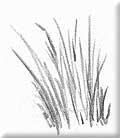
part two
Where the trees meet the grass
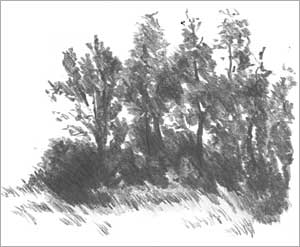 As in any artwork, the area where two objects overlap is critical. How this is rendered can add depth and continuity, as well as a bit of mystery or intrigue to your landscape.
As in any artwork, the area where two objects overlap is critical. How this is rendered can add depth and continuity, as well as a bit of mystery or intrigue to your landscape. A common mistake is creating a straight line dividing the trees and the grass. Instead, break up the area so it is less defined.
Weeds and trees are joined by shadows. To keep this fresh and spontaneous - use negative drawing by applying the graphite in the shadows and the areas between the weeds.
The drawing "Madrid Barn" used this technique to depict the common Iowa overgrowth of bushes and tall weeds.
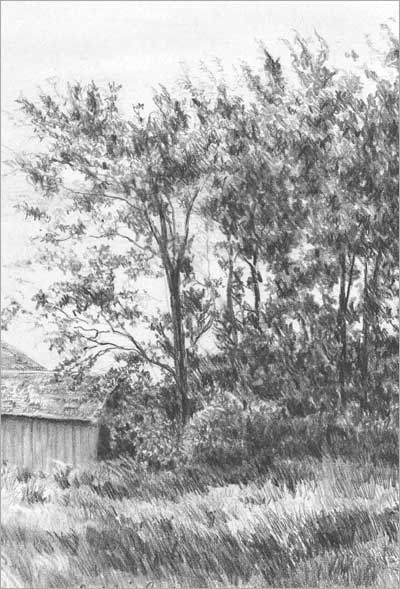
Short, patchy grass
Add a variety
of weeds.
of weeds.
Pasture grass can be short, irregular with areas of ground showing. This can add a lot of texture and interest to the scene.
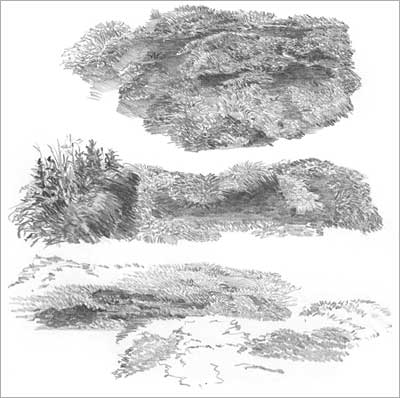
Vary the pencil marks in size and direction.
This is an example of plotting out the areas of grass versus the ground.

This technique is used in the drawing "Summer Oak". Short patchy grass is broken up with areas of ground showing. A hint of an uneven path leads the eye to the barn. The grassy areas under the tree are more sparse, leaving the roots of the trees showing. White flowers shimmer in the foreground.

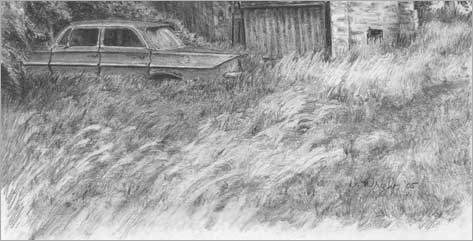
For learning how to draw detailed grass, I highly recommend reading Mike Sibley's
"Drawing Grass" tutorial.


Long, tall grass
There are occasions when grass is depicted long and overgrown as in this example "In the Weeds". Neglected grass creates a beautiful long blade. But even in this environment, breaking it up by varying the length is important. The feeling of a windy day is created through the grass movement (the arch and direction of the pencil strokes). An impression of a few shimmering blades was created by the use of a white mars eraser with a sharp chisel edge. Using a flat chisel point 4H or 2H lead, layer a light tone over an area of grass. This can create areas of grass in shadow or provide uniformity to a section. (See area next to the car) The approach is to give the overall impression of an overgrown yard - not concentration of depicting each blade of grass.
Observation
Take digital photos of a variety of grass and weeds. Close observation of their textures, characteristics and growth through-out the seasons will increase your understanding of this seemingly complex subject matter. The better your understanding, the better your depiction of grass will register and ultimately the better your landscape will read.For learning how to draw detailed grass, I highly recommend reading Mike Sibley's
"Drawing Grass" tutorial.

Tutorial © 2010 Diane Wright
- part one
- part two




